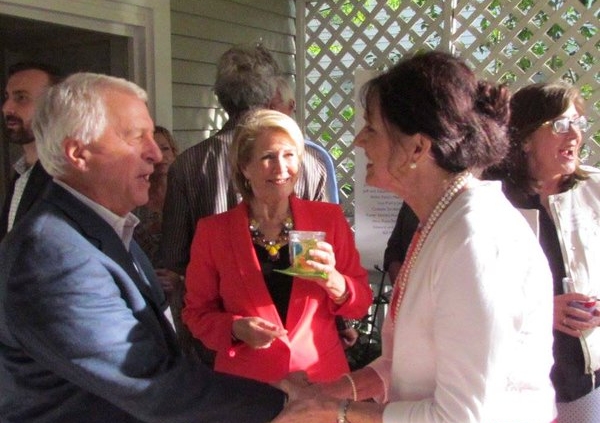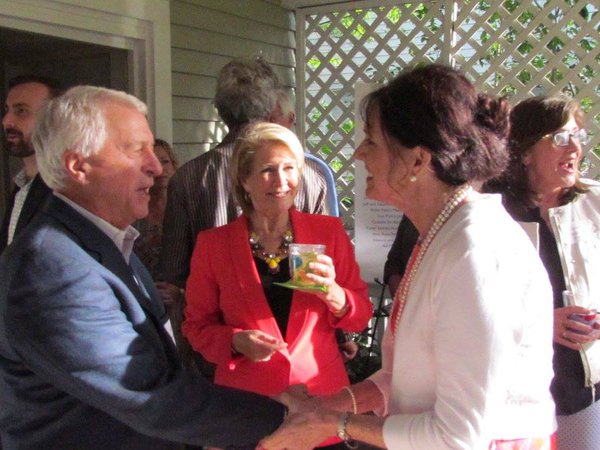7 Tips to Create a Wildly Successful Donor Cultivation Event
Why do we hold major donor cultivation events?
These types of gatherings happen everywhere, and they happen often in the fundraising world. We find that a lot of major gift fundraising happens in these types of quasi-social donor events.
Here’s an issue: sometimes these gatherings can feel awkward. Then other times, they are easy and enjoyable. They just flow like a river.
Social events such as Porch Parties can be terrific opportunities to meet special donor prospects that you’ve been trying to see. They give you the chance chat with a donor who may be interested in getting more involved.
We use small donor “friendmaking” events all the time as fundraisers. We often try to pull together a small, special group of supporters who can help our cause. And we mix and mingle.
But it takes skill to pull this off beautifully. How do you make these types of events work really well?
Here are our tips to help you organize a donor cultivation event that really works.
1. Establish your objectives for each event.
Tip: Social events offer a wonderful opportunity to get to know important donors better. Set up your event to offer that opportunity!
Receive expert advice. Direct to your inbox. Subscribe
2. Have a well-known individual send the invitation.
Who is doing the inviting really matters. Even more, how you frame the invitation really matters.
For example, who may be able to get your guests’ attention? Who will they respond to?
A board member or volunteer can do the inviting and hosting. That person is reaching into his or her social capital networks to bring new friends into the organization.
Tip: If the invitation comes from a special donor or well-known leader in the community, then it will be more appealing to potential attendees.
3. Select a welcoming location for your donor cultivation event.
The location is vitally important, because it sets up the “environment” for your event. It can be stiff and formal — or welcoming and relaxed.
If you have the gathering in a very formal, open space, everyone will feel formal. If it is a small, enclosed space, people typically will feel more comfortable.
Tip: We prefer events in someone’s home. The ambience is relaxed and social, and that’s what you are after.
Find out how we can help you achieve your fundraising goals with world-class consulting and custom training.
4. Set a casual, “social” tone – not business.
I once read that the success of any donor cultivation event depends on the attitude and energy of the host.
If you are hosting, you MUST be gracious, charming, considerate and happy. That sets a lovely tone, because the guests will pick up on your energy.
If the objective of your event is to work the crowd and establish relationships with current and potential donors, then you really do want to bring forth a more social, friendly feeling.
Tip : Greet people warmly, and welcome them. It makes them feel at ease and happy too. It’s vitally important that your guests enjoy themselves.
5. Use name tags for donor cultivation events – always!
We are great fans of name tags. Even more, we simply think they are good manners.
People really do want to meet each other, and they so appreciate having the person’s name so that it’s easy to see.
Even more important, you want to be sure you know who is there. How can you work the crowd if you don’t know who to focus on?
Tip: Name tags will help YOU too, if donors you don’t know well come in the door.
6. Control the program.
Programs are important, because that’s when you share stories about your mission. But above all, do not go on too long.
Your guests may be in a social mood and really enjoying themselves chatting with each other. So keep the program short, snappy, hard-hitting, and upbeat.
Also, your guests need a place to sit down. You do not want them standing a long time uncomfortably, wishing that the program would end!
Tip: Consider using an Emcee to introduce and/or cut off presenters who go on too long. The Emcee can also help mange the Q and A after the presentation. For example, they can pull out questions from your donors and encourage an open-ended conversation.
7. Launch the program with a testimonial from one of your guests.
A testimonial is a lovely way to set the tone. There’s nothing like a heartfelt message at the very beginning – especially from a VIP peer.
Tip: Your volunteer can say: “I also want to welcome everyone tonight. I care about this organization because . . .” – and just have them fill in that sentence.
BONUS TIP – Plan Your Follow-Up or Don’t Do the Event!
Please do not even think about having an event like this unless you know exactly how you will follow it up and are sure that you have the staff or board members ready to make follow-up calls.
I have heard too many sad tales of brilliant donor cultivation events staged by worthy causes, full of powerful and influential people who could help the organizations fly high; regrettably, no follow-up ever occurred.
If it’s appropriate, you can followup by asking guests to share their impressions:
You can ask:
_ What were your impressions?
_ Do you have any suggestions or ideas to share with us?
_ Would you like to get more involved?
Bottom Line on your next donor cultivation event:
Follow these tips to stage a small cultivation event that can move your fundraising forward. Small socials and porch parties give you access and a way to touch base with important supporters.
But be sure that your guests enjoy themselves. That’s a vitally important objective. If they do – then they will come back for more!
If your organization is planning a capital campaign or expanding your major gifts program – we can help. Email coaching@gailperry.com if you’d like to schedule a free strategy call with us.




